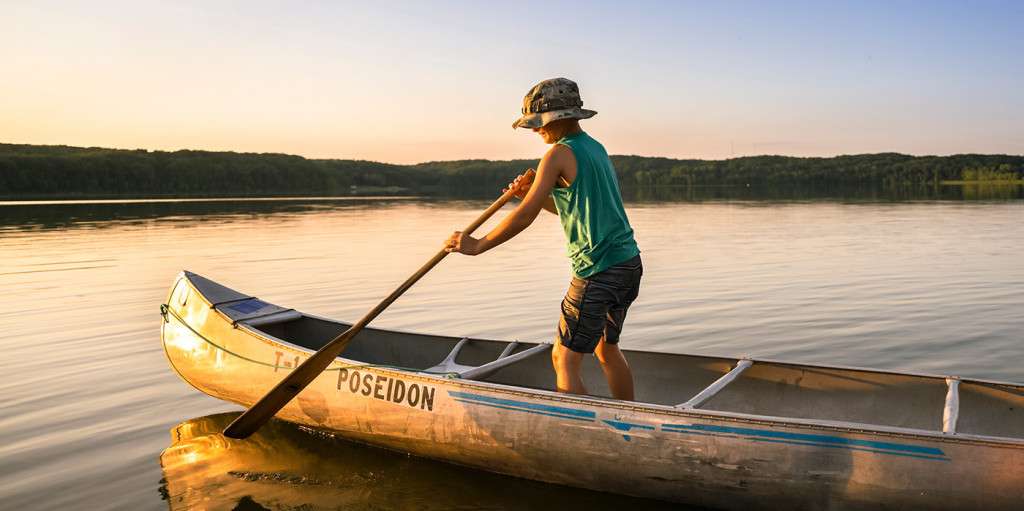Learn to make the four perfect canoe strokes: Forward, Back, Draw or Pry. Mastering these strokes is required before advancing to use of combination strokes.
Making a perfect canoe stroke doesn’t signify some form of flawless technique, it simply describes the basic canoe strokes used to move a canoe left, right, forward and back. Learning to make the forward, back, draw, and pry strokes is a prerequisite for mastering the combination strokes regularly used by proficient canoeists. These combination strokes utilize both perfect strokes and braces. Effective paddling does not depend on brute force, but accurate technique and practice. Even the strongest paddler will tire quickly from poorly executed paddle strokes.
Forward Stroke
This is a natural stroke for a beginning paddler. Good technique will allow you to paddle all day. Hold the paddle vertically and not at an angle across the chest. This position allows the paddle to move parallel to the keel and lets you put some power into the stroke. Let your upper body do the work, power in the stroke come from the top hand driving the paddle down and less do from the bottom arm pulling it.
Learn to feather the paddle by turning your top thumb forward as the paddle is recovered from the water. This action combined with swinging the blade out and away from the canoe will reduce effort required to lift the paddle between strokes. Use a short stroke. Most of the power generated in a forward stroke comes during its initial vertical travel and decreases rapidly as the paddle tip passes the hips.
Back Stroke
This might best be thought of as the stroke used when you change your mind. It situations were going left, right or forward seem poor options, this is stroke of last resort. Use a motion opposite that of a forward stroke to perform a back stroke. You need to reach back and pull the paddle parallel to the canoe’s keel. A bow paddler will need to make a reverse “J” motion at the end of the stroke to keep the canoe tracking straight.
A more efficient method of backing is the compound back stroke. In three steps the paddler reaches back and pulls with the paddle, flips the paddle over at midpoint, and pushes forward to finish the complete stroke. After a little practice in calm water, you will have a powerful tool in your skill set and be able to keep the canoe tracking straight during the stroke.
Draw
This stroke is used to pull the end of your canoe towards the paddle by reaching out to the side and pulling towards the canoe. The paddle needs to enter the water vertically and be pulled in quickly for the best results.
Pry
This stroke is much like the draw. It is used to push the end of your canoe away from the paddle by slicing under the craft and pushing the paddle blade away. Out of the four simple strokes, this one is the most difficult to master. First you rotate your shoulders and use your upper arm to place the paddle grip out from the side of the boat.
Next you twist the paddle blade parallel to the keep by turning your top thumb on the grip back. Then you pull your top arm back using the bilge of the canoe as a fulcrum and make a prying motion. The stroke is finished by twisting your top thumb forward on the grip and slicing the paddle blade back under the canoe.

